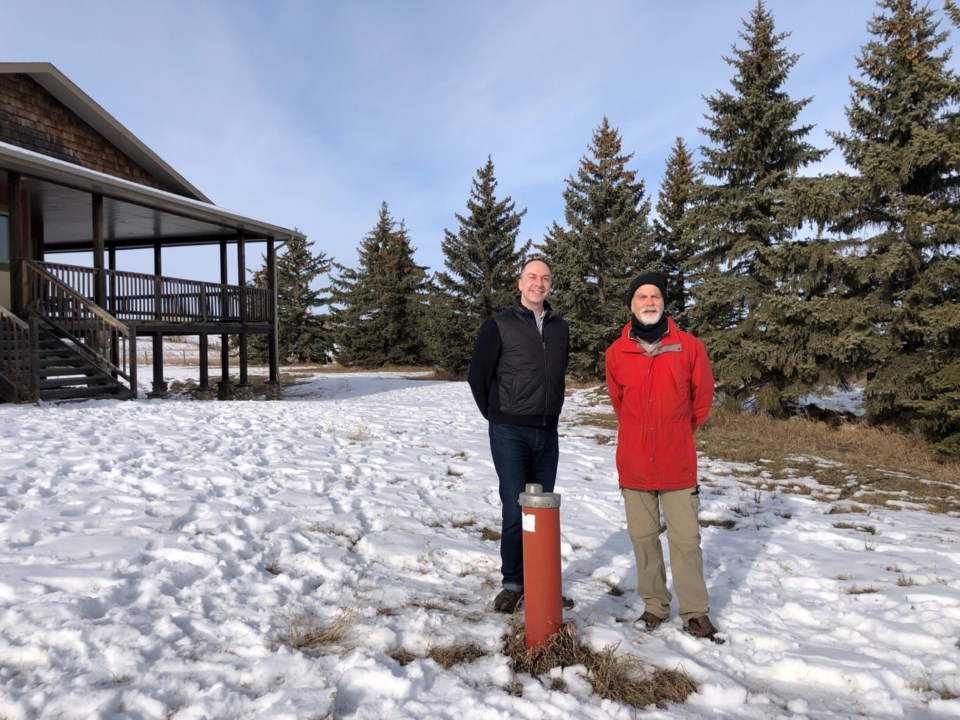Groundbreaking research on radon levels in rural Alberta is a major cause for concern in southern Alberta, according to a Calgary scientist.
Dr. Aaron Goodarzi, director of the Robson DNA Science Centre and lead of science communication for the University of Calgary’s Charbonneau Cancer Institute, has dedicated much of his decades-long career to studying radons.
"The Prairies, absolutely southern Alberta being part of the Prairies, Okotoks, the surrounding municipal district of Foothills, is indeed one of the largest radon-exposed parts of this world," said Goodarzi. "Now, if you take Canada as a whole, we're easily in the top five, and if you look within Canada, it's sort of a three-way tie between the Prairies, the Atlantic region and the North.
"So, if you think of the Prairies, tied with Atlantic and Northern Canada as the highest in this country, and you look at the rural communities as the highest among those, I would say that the areas surrounding Okotoks would be easily classified as one of the highest observed in terms of what we understand at this time on this planet."
Goodarzi and his team have been studying radon levels in Canada, with a recent focus on rural communities.
"What we've done over the past few years is take a look at how indoor-air residential property radon exposure in Canada differs as a function of different types of communities," said Goodarzi. "What people across the world had noticed over the past decade is that these different community types are not the same, and very often there's higher radon in rural communities, but nobody really knew why.
"We addressed one of the theories, that perhaps it was attributable to something in groundwater wells. That's one of the universal things that most rural communities across the world have in common... That theory was okay, except the problem was nobody found enough radon in our water to ever explain how much radon was in their houses, differing from the cities."
Well, not water, makes the difference
Goodarzi and his team have determined that it is not the water, but it is the well that makes the difference.
According to Goodarzi, groundwater wells that have been drilled into the ground allow radon gas, which forms in soil and rock, to rapidly rise to the surface and subsequently increase human exposure. As such, his research indicates that houses drawing water from wells in rural communities have over 30 per cent higher indoor radon levels compared to similar houses in urban communities.
Considering the radon levels present throughout Foothills County and the Prairies, he said that all Canadians should understand the dangers posed by the substance.
"Right now in Alberta, we estimate that there's one new case of radon-induced lung cancer every day," said Goodarzi. "In Canada, two out of five people who experience lung cancer have never picked up a cigarette. In short, their lung cancers are not caused by smoking tobacco, they're caused by environmental exposures, including radon."
Radon cannot be detected by human senses. It is odourless, tasteless, colourless and completely invisible, and the radioactive gas can be prevalent in indoor air and inhaled without any indication outside of testing with equipment.
Goodarzi described the danger as stemming from the fact that radon is a radioactive substance emitting alpha-radiation, which he said is akin to space radiation and creates genetic mutations in the lungs of those exposed.
"We have among one of the world's lowest tobacco smoking rates and among one of the world's highest prevalence and mortality from lung cancer. Our radon levels are, again as I mentioned before, exceptionally higher than many other parts of the world and this really speaks to that."
Goodarzi also emphasized recent discoveries that children are "exceptionally sensitive" to radon and that working from home, as many Canadians have been doing recently, puts people at an even greater risk of radon exposure due to increased time spent in an indoor environment where air quality may not be "absolutely immaculate."
Radon is easily detectable and avoidable
Considering that radon is easily detectable and avoidable with proper equipment, Goodarzi urges households across Canada to undergo radon testing.
"Testing for radon is quite straightforward," he said. "The technology is good. It's affordable. Generally speaking, your typical radon test is somewhere between $50 to $60. You do that for three months in the house and you'll get a good idea of your radon.
"You need to do it for at least three months because radon fluctuates a lot over the short term ... and if you do have high levels, the good news here is it's fixable. It's one to two days work in the property. It's a permanent fix to the house."
Goodarzi said hiring a radon mitigation professional is just like getting any other contractor to fix something in the house.
"There's great professionals out there who are certified in Canada to do this," he said. "They know what they're doing. It's a building science and they have what's called C-NRPP or Canadian National Radon Proficiency Program certification.
"There's very few things that give us cancer in this world that are so easy to remove."
Evict Radon, a national cancer prevention study led by Goodarzi, offers test kits. Learn more about the study and ordering a kit here.
People throughout southern Alberta can also borrow radon test kits for up to three weeks from their local library through Marigold Library System. Visit the Marigold Library website to find out how to borrow a radon kit and for more information.



